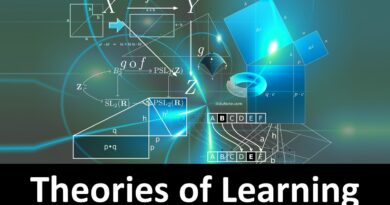Play-Based Learning and Teaching Model
The play describes the natural, spontaneous and creative activity that children engage in, learning describes the relatively permanent change in behavior that results from experience. Thus, learning in childhood comes through opportunities afforded by play.
In this article, we shall be examining a play-based Model of Learning and Teaching.
This Model or framework, which reflects the cycle of human learning, is especially useful for determining the age-appropriateness of any curriculum content. The Model is adapted from NAEYC and NAECS/SDE.
Developmental Appropriateness
The concept of developmental appropriateness has two essential dimensions: age appropriateness and individual appropriateness.
When we talk of age appropriateness in human development research, what we mean essentially is that there are universal, predictable sequences and patterns of growth and change that occur in children during the first nine years of life.
These changes occur in all domains of development such as; physical, language, emotional, social, moral, and cognitive.
Read Also: 9 Ways How Playing with Toys Make Kids Smarter
Knowing the typical development of children within the age span the program serves will provide a framework from which teachers prepare the learning environment and plan appropriate experiences.
On the other hand ‘ appropriateness’ reflects the consideration that each child is a unique person with an individual pattern and timing of growth, as well as individual personality, learning style, and family background.
Learning in young children often results from the interaction between the child’s thoughts and experiences with materials, ideas, and people. For learning to be enhanced, these experiences should match the child’s developing abilities, while also challenging his interest and understanding.
Basic Features of Learning

There are various features of learning which are common and applicable to all kinds of learning.
1) Generalization
This refers to the fact that a response may occur in the presence of an event that is similar, but not necessarily identical to the one present when it is first learned.
This feature is seen quite frequently but the degree of a generalization depends on the similarity between the two stimuli. It should be noted that the more similar the stimuli, the more similar the response.
Generalization occurs in anti-social behavior, such as aggression and pro-social behavior.
Let us consider the case of John who one day wanted a toy from Peter. He asked Peter but when Peter refused, John hit him and managed to get the toy he wanted.
John observes that it was his aggressive act that got him what he wanted, so he tries it again and if he is successful in achieving the same result, he generalizes this response.
Thus, every time he wants something, he learns to use aggression as a means of getting what he desires.
Read Also: Trends in Growth and Development of the Preschool Child
2) Discrimination
This feature of learning is the inverse of generalization. Discrimination refers to the child’s ability not to respond to a stimulus that is different from the one for which the response was originally learned.
This phenomenon is witnessed when an infant suddenly starts crying when a stranger wants to pick him up and cuddle him.
The baby has learned to discriminate between family members and the stranger, thus he does not respond with joy and laughter as he would have done if someone in his family had picked him up.
3) Shaping
A child faced with a new stimulus may not have the slightest inclination to respond in a particular way, but his behavior is gradually shaped to produce the appropriate and desired response.
Shaping is a gradual process where successive approximations to the desired behavior are rewarded until the final behavior appears. This feature of learning is used to deal with children who exhibit behavioral problems such as timidity or shyness.
4) Extinction
This refers to the period taken for a learned response to disappear. In classical conditioning, extinction refers to the period after the conditioned response has been established.
After several trials of presenting only the conditioned stimulus, the learned conditioned response is seen to disappear or extinguished. In operant conditioning, extinction refers to the period in which the reinforcement is discontinued.
Without reinforcement, the response will eventually disappear. The process of extinction is used to observe how well a particular response has been learned and it also shows that the learned behavior can be unlearned. We can achieve this by ignoring some undesirable behavior.
5) Competence Motivation
This term is used to describe the child’s desire or need to master a skill. This concept of the joy of learning brings forth the question of the degree of need and the influence of external rewards to enhance the process of learning.
There are probably individual differences in the degree to which children need external motivation to learn.
Read Also: Learning and Teaching Model for Children
Read Also: Factors that Determine Readiness to Educational Learning



